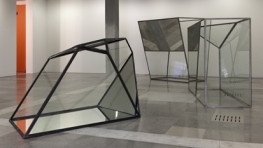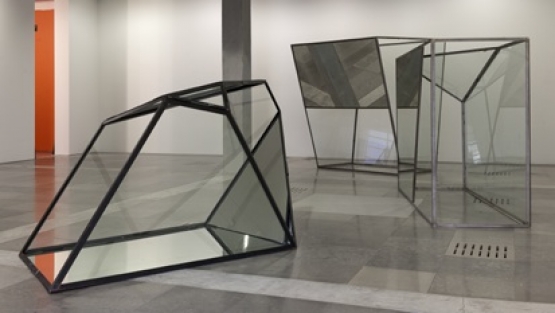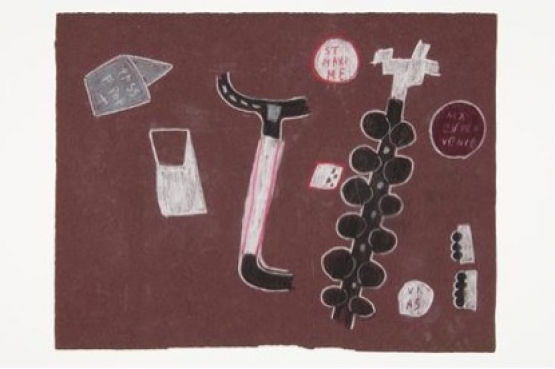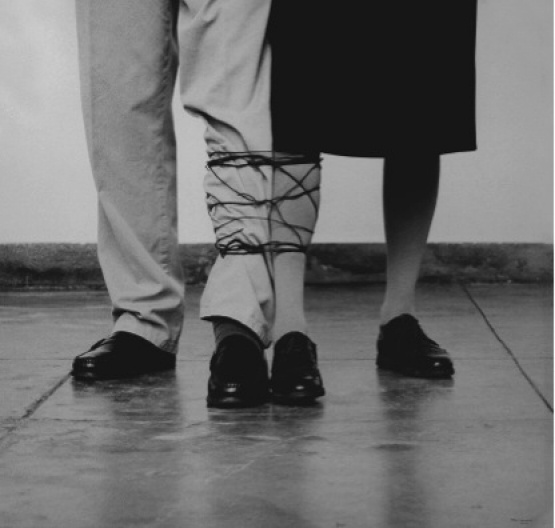Featuring works by artists distinguished by one of the oldest and most enduring art and architecture awards in Portugal, this exhibition facilitates a rehearsal of the first Retrospective of Portuguese Art from the past 30 years. A professional and internationalized Art Critics Association attributes this award: AICA (the International Association of Art Critics, originally affiliated with UNESCO, with head offices in Paris). Official support (received by successive government culture departments) has been vital in effecting the Award (which is pecuniary), but has never implied reinover the choices made by juries in succession.
In search of maximum objectivity, in the catalogues that support the exhibition, emphasis was given to a documental section, with numerous primary sources and an institutional history of AICA itself. In the exhibition, we endeavoured to include works featured in the exhibitions mentioned by juries as having been the object of their distinction. Arrangement of the works at MNAC – Museu do Chiado in linear and diachronic association proved to be impossible. Having lent itself more to the rehearsal of dialogues between artists distinguished at different times, by different juries, this exhibition has an inevitable historical interpretation and critical rereading.
One of the presumptions of the award is that it not only refers to one or more exhibitions from the past year, but that it is sustained by a solid career. In this, one easily understands the décalage of approximately 20 years between the affirmation of a career and its recognition. Only after the recognition of careers initiated in the 1950s and 60s (which took place in the 1980s) do we see (between the 1990s and 2000) the predominance of names of careers launched in the 1970s and 80s.
In the three decades under consideration, a profound change in political and social realms can be observed, as well as those of culture and art in the country. As a matter of fact, 1981, the year of the award’s institution, coincides with some of these frontiers of transformation: the consolidation of democracy and irreversible European integration, a turnaround in the conditions of production, perception and consumption of art, the prospect of conceiving and integrating new models of artistic internationalization. Today we can appreciate how the country and the ways of making art in it have really changed. We have become immensely democratic, with growing numbers of producers and consumers, yet permanent market volatility signals the sector’s inability to create a strong social and economic foothold; artists and their individual quality and efforts continue to be the groundwork of our international success; and public and private policy in support of the arts continues indistinct, which the proliferation of critically underfunded Museums and Art Centres cannot hide. But we have also witnessed a distension: the presence of art has become normal (and expected) in all levels of public life (with all of the dangers that such co-option implies), the tensions between the “Eighties” and the “Nineties” has eased, and instituted powers, with the causes they carried, have tended to disappear with the dawning of a new century.
By mirroring the choices of historians and professional critics (accustomed to viewing art), the list of names establishes a wide canvas that exceeds a mere sum of names. The image of permanent thematic and stylistic heteronomy in Portuguese visual culture, the idiosyncratic and acronical absorption of international idioms, the transversal representation of personal and subjective memory, unites and qualifies the entire display – these features dominate national discourse and can serve to guarantee our originality within the western art system.













